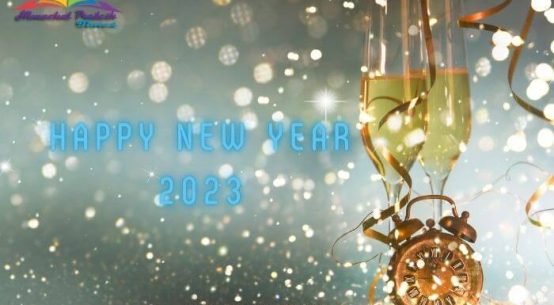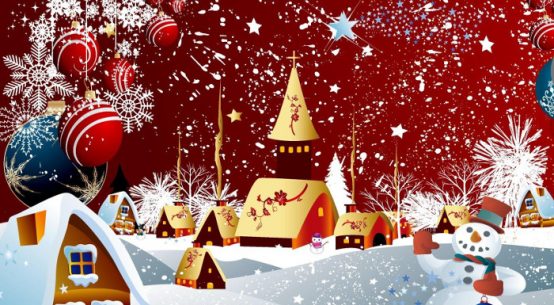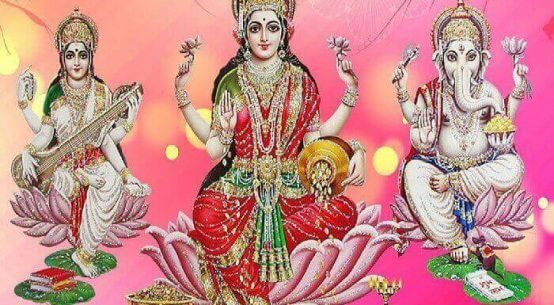The festival of lights, Diwali 2023, is quickly approaching, and people are already spotted shopping in the markets. Dhanteras, the start of the five-day festival of lights, is seen as an auspicious day to purchase and bring in new metal objects, particularly those made of gold and silver. During the five days of Diwali, people follow different rituals and worship various Gods and Goddesses, including Goddess Lakshmi. The most important day of these five days is Amavasya, also known as the new moon day. On this day, people celebrate Lakshmi Puja, Lakshmi-Ganesh Puja, and Diwali Puja. Let’s discuss everything that you need to know about Diwali.
When will Diwali be in 2023?
Diwali is a five-day celebration that happens between October and November in the Hindu calendar. According to the old calendar, Diwali is celebrated every year on Amavasya, the fifteenth day of Kartik month. In 2023, the festival of lights will be on Sunday, November 12th.
Read Also: Lakshmi Pooja, Festival of Prosperity and Love
Here’s a List of the Five Days of Diwali 2023:
| 10 November 2023 | Friday | Dhanteras |
| 11 November 2023 | Saturday | Chhoti Diwali |
| 12 November 2023 | Sunday | Diwali |
| 13 November 2023 | Monday | Govardhan Puja |
| 14 November 2023 | Tuesday | Bhaiya Dooj |
Date and the Muhurta of Diwali 2023:
| Dates | Events |
| Diwali | 12 November 2023 |
| Laxmi Puja Muhurat | 04:21 PM to 06:02 PM |
| Amavasya Tithi Begins | 11:14 AM on Nov 12, 2023 |
| Amavasya Tithi Ends | 11:26 AM on Nov 13, 2023 |
Dhanteras or Dhantrayodashi November 10:
November 10 is Dhanteras or Dhan Trayodashi. According to Drik Panchang, the special time for Dhanteras puja starts at 5:47 pm and finishes at 7:43 pm on this day. This auspicious period lasts for 1 hour and 56 minutes. On Dhanteras, people worship Lord Kubera and Goddess Lakshmi, and it’s a tradition to buy something new.
Narak Chaturdashi, also known as Choti Diwali on November 11:
On November 11, there’s a special day called Narak Chaturdashi, also known as Choti Diwali. It’s the second day of the Diwali festival. According to Live Hindustan, the time considered auspicious for lighting lamps (deadpan shubh muhurat) is from 5:29 pm to 8:07 pm on the same day. So, people will celebrate and light lamps during this time to mark the occasion.
Diwali on November 12:
On November 12th, there’s a big celebration called Diwali. According to Drik Panchang, the best time for Lakshmi Puja on Diwali is from 5:39 pm to 7:35 pm. This is the main day of Diwali when people do special prayers for Goddess Lakshmi. The most joyful and festive activities happen on this day.
Govardhan Puja on November 13:
On the day after Diwali, there’s a special celebration called Govardhan Puja. According to the timing (muhurta), the best time for this puja is from 6:43 am to 8:52 am. On this day, people worship Lord Krishna. They believe that a long time ago, Lord Krishna protected the people of Mathura by lifting a mountain called ‘Govardhan’ when there was trouble with Lord Indra. So, this day is dedicated to honoring Lord Krishna for his kindness and protection.
Bhai Dooj on November 14
The last day of Diwali is called Bhai Dooj, Bhaiya Dooj, or Bhau Beej. It’s all about celebrating the special connection between brothers and sisters. This year, Bhaiya Dooj falls on November 14th. The best time for celebrating Aparahna is from 01:10 pm to 03:19 pm on this day. It’s observed on the second day of the Shukla Paksha of the lunar calendar and is quite similar to Rakshabandhan, another festival celebrating the bond between siblings.
Read Also: Bhai Dooj – Festival of the Beautiful bond Between Sister and brother
However, there’s a bit of confusion about the dates of Govardhan and Bhai Dooj. According to Drik Panchang, both will be celebrated on November 14. So, it’s a day filled with festivities and love between brothers and sisters.
Significance of Diwali:
The Diwali celebration has kicked off with the Dhanteras festival. People are busy buying new things and idols, and making their homes look beautiful with lights, diyas, and rangoli. They’re getting ready to welcome Goddess Laxmi, Lord Kuber, and Lord Dhanvantari into their homes, hoping for blessings of good fortune, wealth, health, and prosperity. On this day, people also light a diya outside their homes as a tribute to Lord Yama.
After Dhanteras, the next celebration is Narak Chaturdashi. This day is dedicated to worshiping Lord Krishna because he and his wife defeated the demon Narakasura. So, Narak Chaturdashi follows Dhanteras in the Diwali festivities.
The most memorable day during Diwali is when we celebrate Laxmi Puja. On this particular day, we show our love and respect to Goddess Laxmi by doing everything we can to make her happy and get her blessings. People make their homes look beautiful with decorations, lighting up lots of small lamps, and making everything shine with happiness.
Diwali Celebration: Diwali 2023:
Diwali 2023 can be a joyous occasion without burning crackers. Here’s a simple guide on how to make the festival special:
-
Decorate Your Home:
- Clean and decorate your home. This will bring positivity and make your surroundings look beautiful.
- Use rangoli, diyas, and flowers to add a festive touch to your living spaces.
-
Diya Lighting:
- Instead of crackers, light traditional diyas and candles. They instantly create a cozy and welcoming ambiance.
- Arrange them in and around your house. You can also place them in your balcony or garden.
-
Lanterns and Lights:
- Hang colorful lanterns or fairy lights. They make your home look vibrant and cheerful.
- You can even make your lanterns with simple materials like paper and glue.
-
Pooja and Prayers:
- Perform a traditional Diwali pooja. It’s a way to express gratitude and seek blessings for the year ahead.
- Include family members in the pooja to make it a collective and meaningful experience.
-
Community Involvement:
- Participate in local community events or organize one yourself. It could be a cultural program, a charity drive, or a simple gathering.
-
Environmentally Friendly Celebrations:
- Embrace an eco-friendly Diwali. Avoid plastic decorations and opt for natural materials.
- Consider planting a tree or gifting a plant as a symbol of growth and prosperity.
In Bengal and some parts of Eastern India, people especially celebrate Diwali. They worship Goddess Kali, and this celebration is called Shyama Puja. Different cities have their unique rituals and traditions for celebrating Diwali.
Read Also: Diwali Decor Ideas to Give your House a Brighter Look
Diwali 2023: Most Popular Diwali Sweets and Dishes:
Diwali is incomplete without mouth-watering sweets and traditional recipes. In India and nearby countries, the stories behind celebrating Diwali may be different, but there’s one thing everyone agrees on—Diwali sweets are super yummy and delightful! At this time, people enjoy tasty snacks like samosas, paneer tikka, and rice kheer. But the real sweetness of the festival comes from the yummy Indian desserts.
Let’s take a peek at the delicious treats you’ll find during the celebrations!
- Gulab Jamun: These melt-in-the-mouth delights are like sweet, round clouds. Made from khoya (reduced milk), they’re soft and have a golden brown outside. These little sweet balls are soaked in sugar syrup, making them sweet and syrupy. It’s like a sugary hug in your mouth!
- Jalebi: Picture a swirling, golden-orange pretzel, but sweet! Jalebis are made by deep-frying a wheat flour batter into a spiral shape and then soaking them in sugar syrup. The result is a crispy, syrupy, tangy-sweet treat.
- Laddoo: Round and cute, laddoos are like little sweet dumplings. They’re made from flour, sugar, and ghee, rolled into bite-sized balls. Some popular types include Besan Laddoo, made from gram flour, and Coconut Laddoo, made with grated coconut. They’re like tiny, sugary treasures!
- Samosa: While not sweet, these are Diwali favorites for many. Samosas are crispy, triangular pastries filled with spiced potatoes, peas, and sometimes even minced meat. They are like crunchy flavor bombs that add a savory touch to the festive spread.
- Barfi: Barfi is a sweet square made from condensed milk and sugar, and comes in various flavors. Whether it’s the classic plain barfi or those infused with nuts like pistachios or almonds, these sweets are like little bites of happiness.
- Kaju Katli: Shaped like diamond jewels, kajukatli is a rich and smooth sweet made from cashews. The cashews are ground to form a paste, mixed with sugar, and then flattened into thin, diamond-shaped pieces. Each piece is a decadent delight, rich in nutty goodness.
Remember, Diwali is a time when kitchens come alive with the aroma of these delicious treats. Families gather to enjoy these sweets and savory delights, spreading joy and happiness all around.
Conclusion:
Homes come alive with the cheery talk of loved ones and the warm glow of lamps as the colorful celebration of Diwali draws near. But even while we celebrate, it’s essential to keep in mind how our activities affect the environment. This Diwali 2023, let’s make a collective effort to celebrate responsibly. While the tradition of bursting firecrackers has been a part of Diwali for many, let’s consider the environmental consequences and the harm it causes to our surroundings. By choosing to avoid firecrackers, we not only contribute to a safer and healthier environment but also show our commitment to a sustainable and mindful celebration.
Lastly, I wish you and your loved ones a Happy Diwali filled with warmth, prosperity, and the radiant glow of happiness. May the light of this festival shine brightly in your lives, spreading love and positivity.
Happy Diwali to all!
Read Also: Welcome to Diwali – Diwali Home Decoration
Hope that this blog has helped you to know in detail about Diwali 2023, Diwali dates, muhurat, the significance of the festival, Diwali sweets, celebrations, and everything. You can share your valuable feedback regarding the blog in the comment section below. And don’t forget to stay connected with us for more helpful and informative blogs!
Thank You, and Happy Diwali to all of you.



